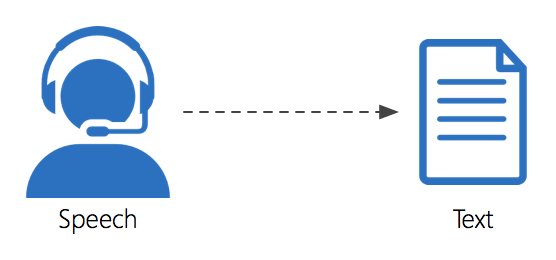Advanced Speech Recognition Techniques in Python: Optimization, Best Practices, and Beyond
 Prakhar Kumar
Prakhar Kumar
Introduction: Speech-to-text technology has transformed the way we interact with machines, enabling seamless communication through spoken language. In this article, we'll explore how Python, with its rich ecosystem of libraries and tools, empowers developers to build robust speech recognition systems.
Why Speech to Text Matters: Speech to text (STT) is instrumental in various applications, from virtual assistants and automated transcription services to accessibility tools for differently-abled individuals. Its ability to convert spoken words into text not only enhances user experience but also opens up new possibilities in automation and communication.
Getting Started with Python for STT: Python offers several libraries and APIs for STT, including:
SpeechRecognition: A library that supports multiple speech recognition APIs, such as Google Speech Recognition, IBM Watson, and CMU Sphinx.
Google Cloud Speech-to-Text API: Google's cloud-based API for high-quality speech recognition.
Mozilla DeepSpeech: An open-source STT engine that uses deep learning models for accurate transcription.
Microsoft Azure Speech Service: Azure's cloud-based STT service with advanced features like speaker diarization and real-time transcription.
Implementing Speech to Text in Python: Let's take a look at a basic example using the SpeechRecognition library:
pythonCopy codeimport speech_recognition as sr
# Initialize the recognizer
recognizer = sr.Recognizer()
# Record audio from the microphone
with sr.Microphone() as source:
print("Speak something...")
audio = recognizer.listen(source)
# Recognize speech using Google Speech Recognition
try:
text = recognizer.recognize_google(audio)
print("You said:", text)
except sr.UnknownValueError:
print("Could not understand audio")
except sr.RequestError as e:
print("Error fetching results; {0}".format(e))
This code snippet captures audio from the microphone, uses Google Speech Recognition to convert it to text, and prints the recognized text.
Advanced Techniques and Considerations: For more advanced STT applications, consider these techniques and considerations:
Language Support: Ensure that the STT engine supports the language(s) you intend to recognize.
Model Training: Customizing models or fine-tuning existing ones can improve accuracy, especially for domain-specific vocabulary.
Real-time Processing: Implement buffering and streaming techniques for real-time speech recognition applications.
Noise Reduction: Apply noise reduction algorithms to improve accuracy in noisy environments.
Privacy and Security: Be mindful of privacy and security concerns when handling audio data, especially in cloud-based solutions.
Conclusion: Speech to text is a transformative technology that streamlines communication and enhances accessibility. With Python's versatile libraries and APIs, developers can easily integrate speech recognition capabilities into their applications, paving the way for innovative solutions across industries. Whether it's building voice-controlled interfaces or enhancing productivity with automated transcription, Python empowers developers to harness the power of speech in their projects.
Subscribe to my newsletter
Read articles from Prakhar Kumar directly inside your inbox. Subscribe to the newsletter, and don't miss out.
Written by
